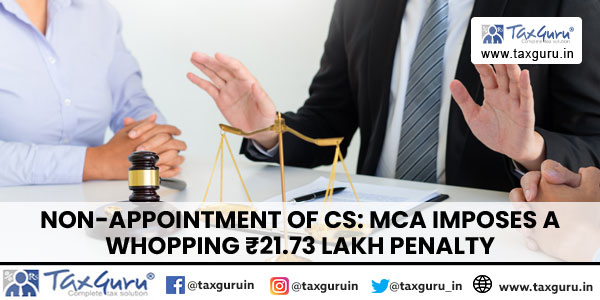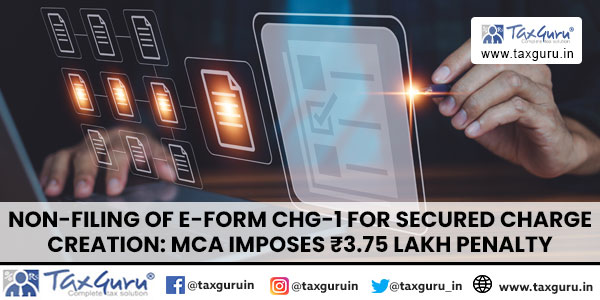Planning to sell a property? So what have you planned to do with the money you will earn?
Pay taxes first!
Did you know? : If you have made capital gains on a financial transaction, like shares, or property; you will have to pay tax on these gains. Known as capital gains, this tax is charged on profits that are made by selling capital assets.
To make taxation easy, capital assets are classified into two categories: Short-term capital asset and Long-term capital asset. Out of these two, LTCG tax means levying a tax on profit generated from assets, like shares, real estate or share-oriented products held for a minimum period of one year from the date of acquisition. In such cases, you will have to pay 10% tax on the profit exceeding Rs. 1 Lakh made by selling an asset. LTCG tax, which was scrapped in 2004-05 by then Finance Minister P Chidambaram, was re-introduced by Finance Minister Arun Jaitley. The tax regime is applicable from April 1, 2018.
How LTCG took shape?`
The tax which will be levied from April 1, 2018, was, however, not completely out-of-the-blue – Prime Minister, Narendra Modi had made his cabinet’s intentions on the same quite obvious in his speech during the inauguration of National Institute of Securities Markets way back in December 2016. He was quoted saying that investors who have been profiting from financial markets must look to make a fair contribution towards building the nation through taxes.
Before we get into the nitty-gritty of this announcement, let’s understand a few basic things about LTCG tax and then, get into its various implications.
What is LTCG tax?
When an investor generates profit on the sale of capital assets, it’s termed as a capital gain. A Capital gain can be billed as the premium of selling price over the cost of acquisition.
It has been further classified:
- Short-Term Capital Gains (STCG) – Any capital assets other than shares/equities held by an individual for less than 3 years since the date of transfer/ownership is referred to as a short term capital asset
- Long-Term Capital Gains (LTCG) – While any capital assets other than shares/equities held for more than 3 years comes under the umbrella of a long term capital asset.
However, in case of equities, Long Term is classified as 12 months or more while in case of Short Term, it’s less than one year.
Currently, LTCG on the sale of any ‘unlisted’ equities is taxable at 20 per cent, while it’s taxed at 30 per cent in case of STCG.
Budget Implications: How will LTCG tax be charged on Mutual Funds and Equity?
Although STCG were taxed at 15 per cent, there was no LTCG applicable on stocks and equity mutual funds since the last 14 years. In the Budget announcement, the government has now introduced a 10 per cent LTCG tax rate India on any gains, above Rs. 1 Lakh per annum, made on redemption of equity mutual fund units or sale of equities after the 1st of April, 2018. Moreover, they need to have been held for more than one year to be applicable for LTCG taxation. Being a direct tax proposal, this tax will come into force for the assessment year 2019-20 (Financial Year 2018-19).
So in essence, if you have made any mutual fund units’/equity sales on or before the 31st of March, 2018, Long-Term Capital Gains tax will not be applied. However, having said that, if these units/shares are sold before holding them for at least one year, STCG tax will be applicable.
Why the new LTCG Tax came into picture?
Until now, investors, who invested in mutual funds or equities and subsequently sold them later on after a holding period of at least one year were subjected to zero LTCG tax. Arun Jaitley while introducing the tax was of the opinion that the equity market has become resilient thanks in part to the numerous Government reforms and incentives. As per the data acquired on returns filed for Assessment Year 2017-18, the total amount generated from exempted capital gains from listed equities and units was pegged at around Rs. 367,000 crores. As such, the returns generated from Long-Term Capital Gains were lucrative enough so it made sense bringing LTCG from listed equities into the tax fold yet again.
There’s a mention about grandfathering in LTCG: What does that entail?
Grandfathering clause basically refers to exempting (someone or something) from a new law or regulation, in this case, an exemption on any gains made by investors before the new tax law came into force. This means that any accrued LTCG arising from the sale of equity mutual funds or shares made till the 31st of January, 2018, and sold after the 1st April 2018, will be tax-exempted.
What About Debt Funds?
Long-Term Capital Gains tax is applicable only on equity-oriented funds and there’s no change in the taxation structure as far as debt funds go. Accordingly, on debt funds, STCG will be taxed as per the individual’s tax slab while any LTCG will be taxed at 20 per cent if the debt fund has been held for over 3 years and after taking into account, any adjustments for indexation.
Indexation Implications
Indexation is adjusting the profit after taking into account the impact of inflation to compute the real taxable gains. The Government announced a small tweak to its initial Budget proposal allowing for inflation indexation on shares of an unlisted company sold on or after April 1. By doing so, the government has managed to address the impact of the LTCG tax rate India, albeit partly, providing much-needed relief to investors across the country. However, any capital gains arising from such transactions will continue to be taxed at 20 percent.
Further, post-January 2018, any investor who acquires a listed share as a consequence of a merger between a listed and an unlisted company, the cost price of that share would be computed by making use of the cost inflation index.
Impact of LTCG Tax on your investment portfolio
The impact of LTCG tax is greater for a large-scale rate of return or for a higher investment amount. If you are an average investor (with investment amount raging from Rs. 1 lakh to 5 lakh per year), ideally, you should reduce your annual portfolio return expectation by almost 10-15% over a 20-year timespan due to LTCG tax.
Higher investment or higher return would incur a higher tax impact. A 15% reduction may sound bad, but as it comes with a 15% annual return for 20 years, it is a good deal!
The best investment tool to beat LTCG tax is ULIPs which is an ideal combination of insurance plus investment. Even before the budget proposed LTCG tax on gains from stocks and mutual funds, ULIPs used to come with advantages over equity mutual funds. Short term capital gains were taxed at 15%, but as ULIPs are insurance products, they are tax free. No wonder why insurance companies and investment seekers are looking forward to LTCG tax as a promising opportunity. ULIPs not just offer equity funds but also debt and liquid fund options. On one hand, income from fixed deposits are taxed at a marginal rate along with 20% LTCG tax on debt funds; on the other hand, gains from ULIPs are tax free. It means a win-win situation for investors and an attractive wealth creation opportunity over other alternatives!
How to Calculate LTCG Tax?
For Instance:
Scenario 1: Let us assume an individual invested in a share in January 2017 and purchased it at Rs. 2,000. This share subsequently touched a fair market value(FMV) of Rs 4,000 on the 31st of January, 2018. Now, if this individual decides to sell off his shares in June 2018, at Rs 6,000, then his taxable gains would effectively be Rs. 2,000 (Rs. 6,000-Rs 4,000). In this scenario, as the actual cost of acquisition is less than the FMV, the latter (Rs 4,000) will be taken as the cost of acquisition and the long-term capital gain will be Rs 2,000 [selling price minus the cost of acquisition].
Scenario 2: Let us assume an individual invested in a share in January 2017 and purchased it at Rs. 2,000. This share subsequently touched a fair market value(FMV) of Rs 4,000 on the 31st of January, 2018. Now, if this individual decides to sell off his shares in June 2018, at Rs 3,000, then his taxable gains would effectively be Zero (Rs. 3,000-Rs 3,000). In this scenario, the FMV (4,000) is not only higher than the actual cost of acquisition (2,000) but it is also higher than the sale value (3,000). Hence, the sale value will be equated as the cost of acquisition and the long-term capital gain will accordingly be Zero [selling price minus the cost of acquisition].
Exemption from capital gains
There are specific exemptions which help you reduce your capital gains subject to tax. For example, buying a new residential house could exempt your LTCG tax earned from the sale of the old house. Moreover, investment in certain bonds, notified by the government could reduce your capital gains up to Rs. 50 lakh.
Disclaimers: Taxes are subject to change as existing tax laws




























I appreciate you for giving such an informative portal.
I purchased25 shares of a Reliance product during 1995 at its inception.It underwent a no of changes and emerged as the present Reliance Industry. I sold it now for Rs.144000.Purchase price was Rs250 only.Should I pay LTCGTax.In case more details are needed l will post a letter.I shall pay consultation fee.
Herek Baat me confusion karna NDA Jaitly ki aadat hey
Pay taxes first! Very Informative Read.
Useful information! I didn’t know that ULIPs come with so many benefits.
Thanks a lot for sharing this, I was planning to sell my property and all this was hell confusing. Much clearer now.